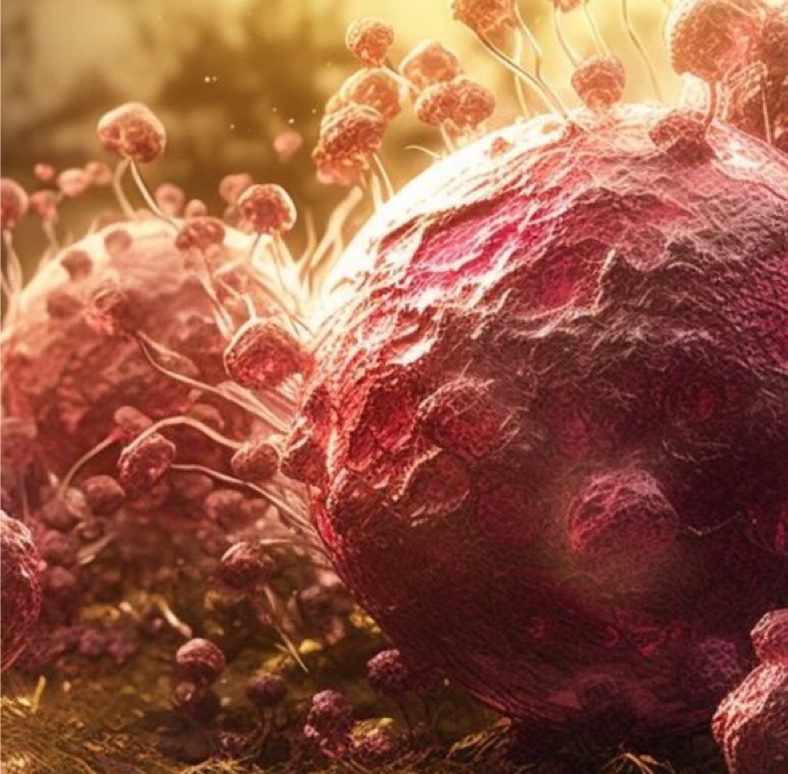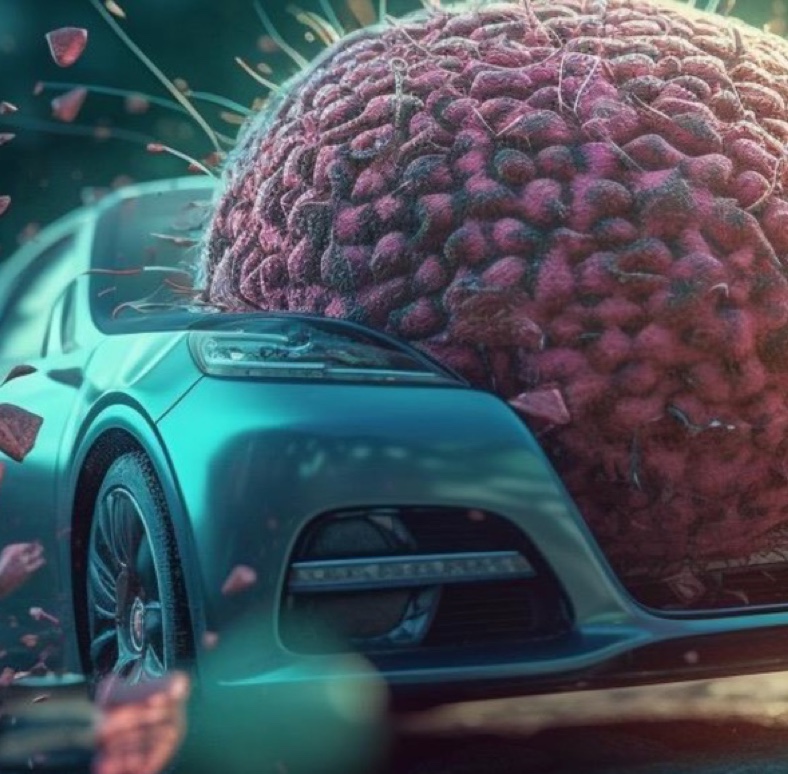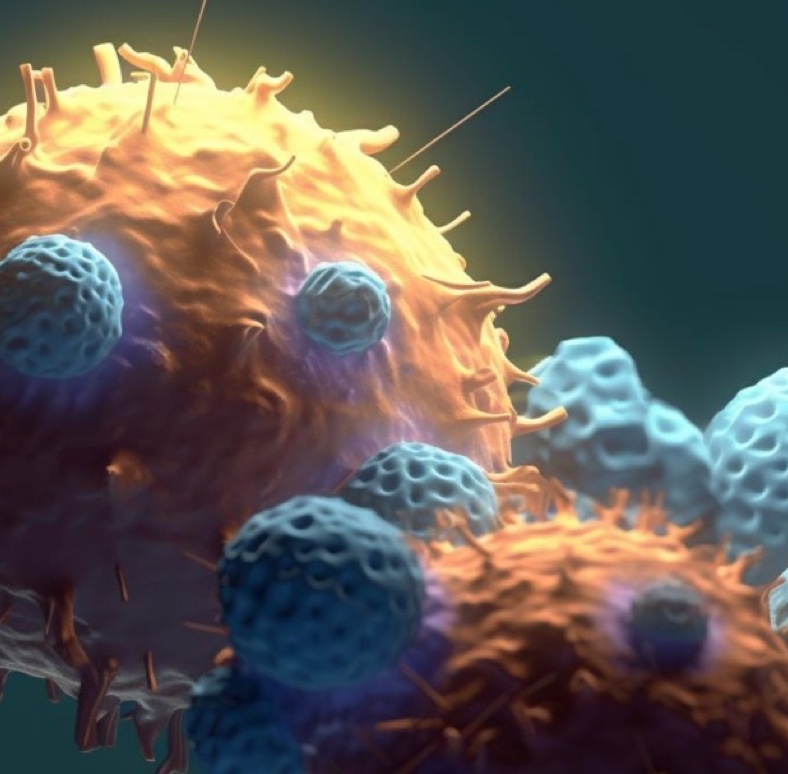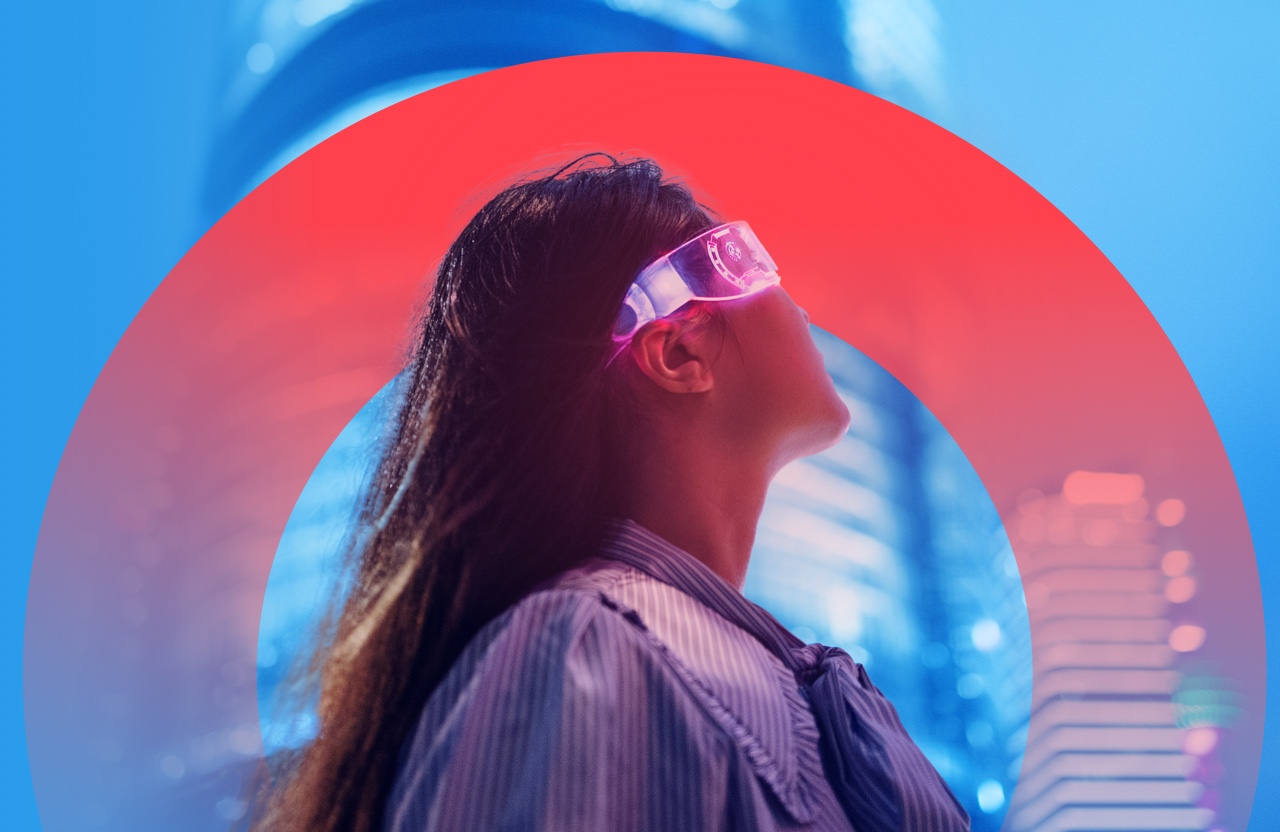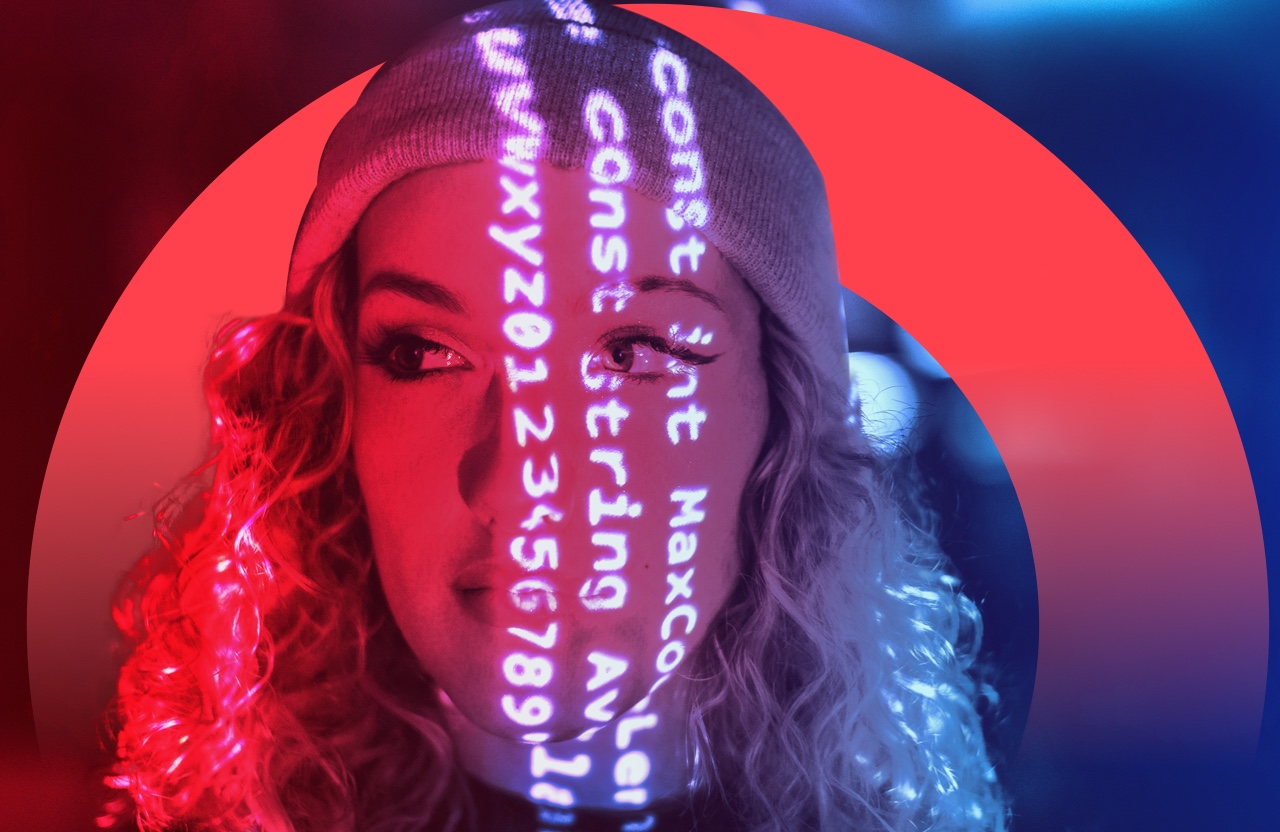What issue can we solve for you?
Type in your prompt above or try one of these suggestions
Suggested Prompt



Public Sector
How Generative AI Images Can Change Health Education in the Public Sector
Finding images of microbiology that visually describe what happens at the cellular level is crucial for scientific education and communication. Many biological processes occur at the molecular level. Visualizing molecular processes through images can make complex scientific concepts and precision medicine more accessible to students, researchers and the general public. It facilitates effective communication of scientific findings and fosters a better understanding of the molecular world, which is what many government health agencies set out to do. But finding microbiological images can be a challenge.
There is a limited repository of specific images that can be purchased from stock image agencies and agencies such as the National Institute of Health can provide images from their microscopy lab. However, these options can be costly.
With inflation dramatically shrinking public health budgets in the past decade, the potential of AI-generated images is looking very promising. Using generative AI images in conjunction with traditional digital design tools will revolutionize the way public health organizations educate and communicate with their audience about how microbiology and precision medicine work.
How generative AI image creation helps public health
Text-to-image generation deep learning models like Midjourney and OpenAI’s DALL-E 2 are promising new tools for image generation in an educational healthcare setting.
First introduced by OpenAI in April 2022, DALL-E 2 is an AI tool that has gained popularity for generating novel photorealistic images or artwork based on textual input. DALL-E 2 has been trained on billions of existing text-image pairs off the internet and its generative capabilities are powerful. Another example of generative AI that can convert natural language prompts into images is Midjourney Labs' AI-powered image generation platform, which enables the quick creation of high-quality visuals based on text descriptions. These generations are useful for public health agencies to generate visual aids and educational materials and enhance presentations.
The use of these tools always begins in the same way—with a prompt. Prompts are the instructions or examples you enter into a generative AI platform to produce a response. They can come in different forms. They can be single sentences or paragraphs or even contain multiple examples. In this case, the aim is to craft a prompt to create images used to communicate scientific concepts, like precision medicine.
How prompts are used to create images
Sometimes the results created by medical illustrators don’t quite resemble scientifically correct images. Both human illustrators and AI usually need a few tries to get it right, as seen in the below early experimentation examples written by the PS creative team at NCI.
-
![Breast cancer cells being attacked by natural killer cells]()
Prompt #1
A cluster of breast cancer cells being attacked by natural killer (NK) cells. The image of the NK cells could use some work.
-
![Breast cancer cells being attacked by CAR T-cells]()
Prompt #2
A cluster of breast cancer cells being attacked by CAR T-cells. Here, the text is misinterpreted by the image generation platform.
-
![A cluster of yellow breast cancer cells being attacked by blue CAR T-cells]()
Prompt #3
After a little more refinement, and feeding more images into the prompt, the AI platform generates an image of a cluster of breast cancer cells (yellow) being attacked by CAR T-cells (blue).
The anatomy of a prompt
The illustration above demonstrates the output sequence of three different prompts, rendering various generative AI art of a microbiology image at various stages of the process. The vision? To create a scientifically accurate representation. A deeper look into the anatomy of a prompt reveals how a successful image is created.
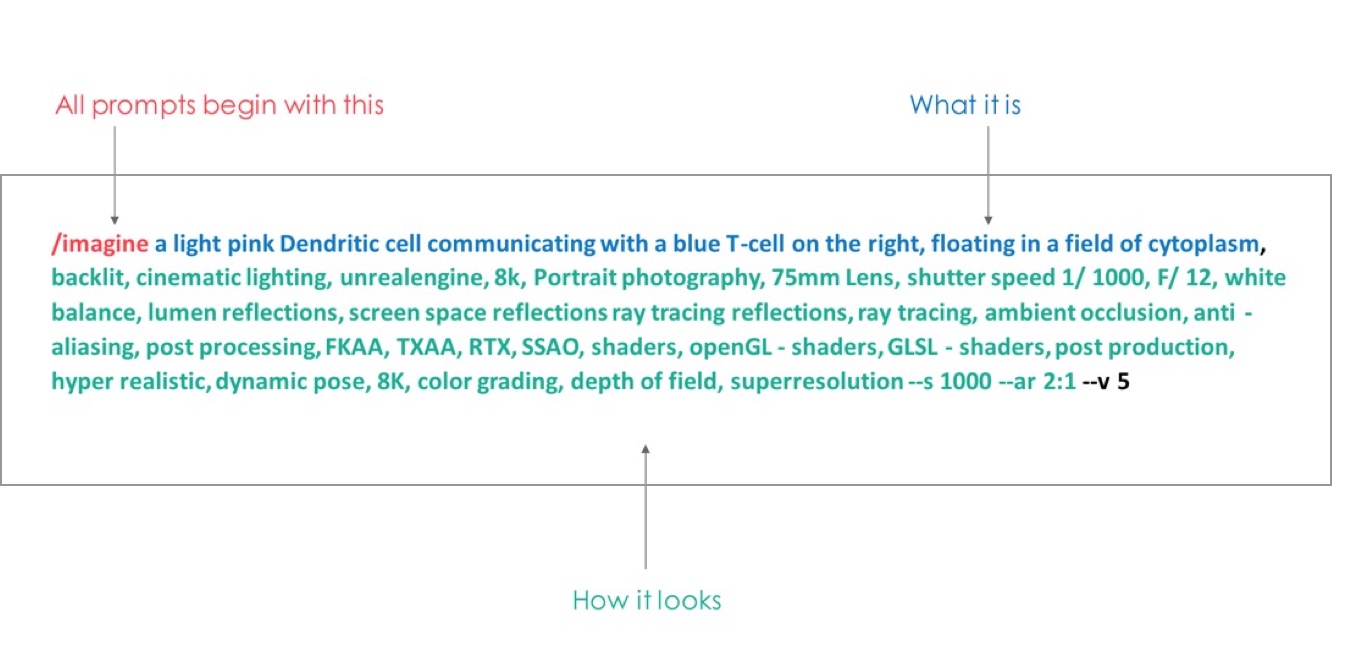
The result
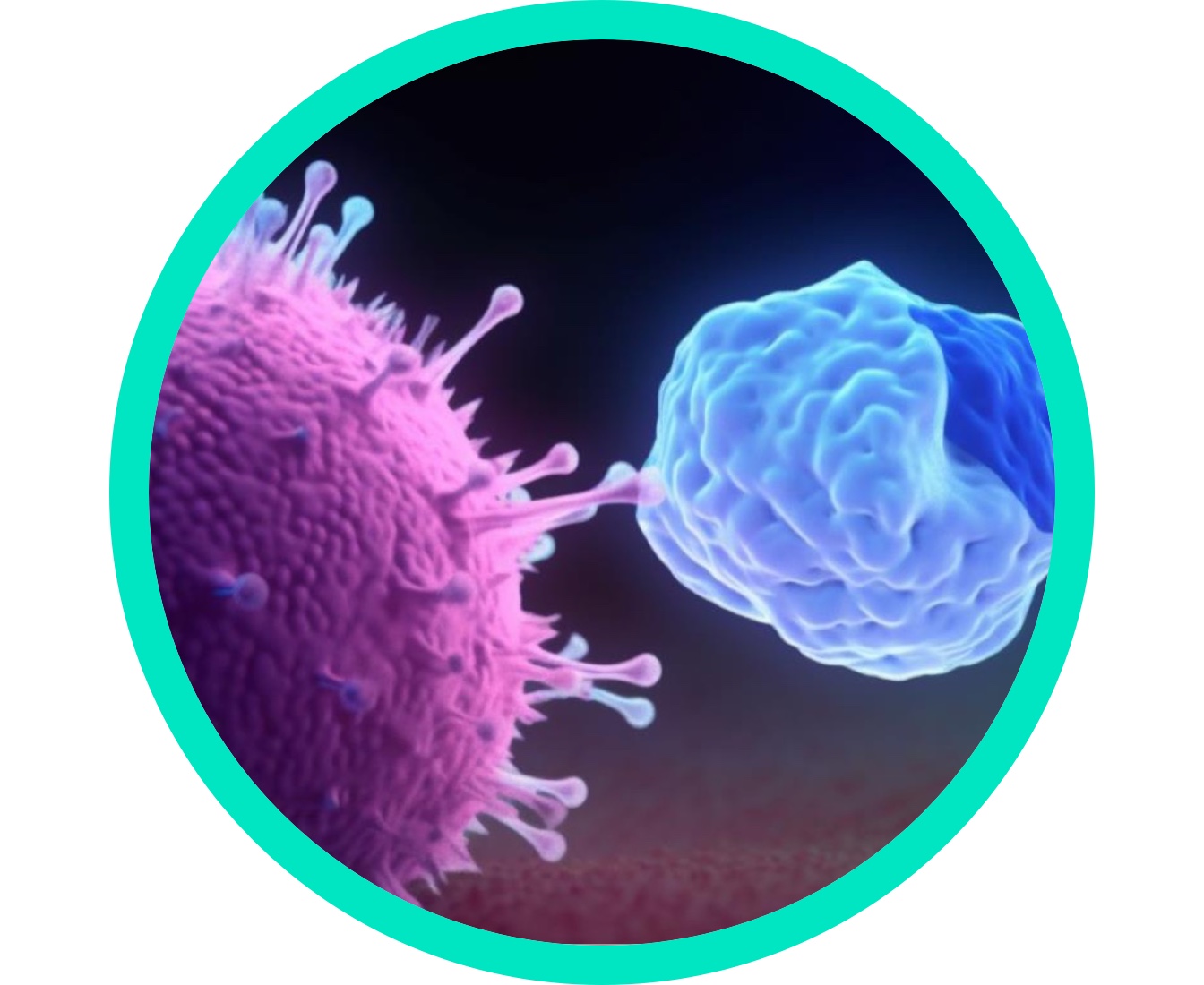
Is public health in the era of deep machine learning?
The use of AI-generated imagery is an opportunity to narrow educational gaps in general public health and provide an avenue to deliver affordable microbiology imagery to educate audiences across the world. Generative image models are trained on large datasets to enable the generation of synthetic images that closely resemble what happens at the molecular and cellular levels in our bodies. Thus we train algorithms in deep machine learning. The output use cases range from educational use to image processing in a clinical setting, such as for medical diagnostics or accelerated research and development. Here are two key challenges for the industry ahead.
Data bias: Generative AI models rely heavily on the training data's quality and diversity. If the training data is biased or limited in representation, the generated images may inherit these biases, potentially leading to inaccurate images or, in a clinical setting, a misdiagnosis.
Explainability: Deep learning models, including generative AI models, are still considered "black boxes" due to their complex architectures and internal workings. The lack of interpretability and explainability challenges understanding how and why a model generated a specific image. Addressing this limitation is crucial for building trust in generative AI models in the public healthcare industry.
Will generative AI art disrupt the “stock imagery” industry?
Historically, stock image libraries have been an important resource for education initiatives in public health. Even though it’s in the early stages, there are already some changes disrupting this space. Getty Images recently launched a generative AI art tool trained on its content library. Other companies in the field are doing the same. Adobe released its Firefly model, trained on its licensed images, across its Creative Suite and Creative Cloud service.
Using the AI capabilities directly within the stock photo sites requires an additional subscription to use the tools. While in beta, these tools did not compare well to Midjourney for quality and thus were not used in the creation of the images illustrated above. The Firefly tools in the latest releases of Photoshop and Illustrator are used mainly for adding background to existing photos or illustrations to accommodate multiple crop sizes for the image creation team’s content management system.
Here are some of the benefits of using generative AI in public health education for government agencies.
- Automation: Generative AI can automate the creation of customized educational content tailored to specific healthcare topics, ensuring that the material is relevant and engaging for different learners
- Scalability of knowledge: Government agencies can quickly generate a vast array of learning resources, including interactive simulations, case studies and assessments, to accommodate greater citizen learning
- Cost-effectiveness: Generative AI can significantly reduce the time and resources required for content creation. Automated generation of educational materials allows government agencies to develop and update training content more efficiently, saving both time and costs
Now is the time to revolutionize the way public health agencies educate their audience.
Using AI to create images for communication and educational purposes has the potential to revolutionize the way public health agencies communicate with and educate citizens.
AI gives us the opportunity to set the scene and render it in a way that makes the viewer feel as though they have a front-row seat to the immune system fighting cancer, how cells make proteins or how genetic mutations happen within DNA. It is the vista we create that pulls the viewer into those microscopic worlds.
Related Reading
-
![]()
Insight
How Residents Will Navigate Government Services as Gen AI Evolves
Learn more about how people are using generative AI, and how it can help government agencies reach faster and better public sector outcomes.
-
![]()
Case Study
How generative AI will revolutionize your business
Businesses can use generative AI to enhance workflows rather than replace human roles—with a more human-AI collaboration in mind.
-
![]()
Insight
6 Things Every CEO Should Know About Generative AI
With generative AI, businesses have new ways to utilize data and solve problems. Learn what CEOs need to consider to best leverage gen AI for their company.




